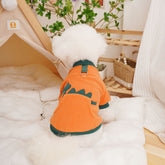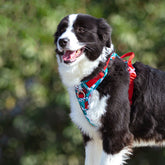Understanding Your Canine Companion: The 10 Most Annoying Behaviors Dogs Exhibit and the Reasons Behind Them
Table of Contents
- Key Highlights:
- Introduction
- Jumping on People
- Begging for Food
- Chewing Everything in Sight
- Barking Excessively
- Stealing Socks and Other Random Items
- Rolling in Smelly Things
- Ignoring Commands (When They Feel Like It)
- Destroying the Yard
- Invading Personal Space
- Dragging Their Owners on Walks
- Final Thoughts
Key Highlights:
- Dogs express excitement and seek attention through various behaviors that can frustrate their owners.
- Many annoying habits, such as jumping on people and excessive barking, stem from instinctual or social needs.
- Understanding the motivations behind these behaviors can help in managing them effectively.
Introduction
The bond between humans and dogs is one of the most enduring relationships in the animal kingdom. However, this connection is not without its quirks. While dogs are often celebrated as loyal companions, many of their behaviors can occasionally become a source of irritation for their human counterparts. From incessant barking to the habit of stealing socks, these actions may seem perplexing, but they are usually rooted in instinct, communication, or social interaction. In this article, we delve into ten of the most annoying habits that dogs exhibit, exploring why they act the way they do and offering insights on how owners can manage these behaviors.
Jumping on People
One of the most common complaints among dog owners is related to their pets' tendency to jump on people, particularly when greeting guests. This behavior may seem charming when exhibited by puppies, but it can quickly become a nuisance—especially when larger dogs are involved. Dogs jump primarily due to excitement and a desire for attention. In their minds, this is a way of expressing joy and inviting interaction.
The Reasons Behind Jumping
Jumping is often an instinctual behavior that puppies and dogs develop as a way to communicate with their pack, including humans. When a dog jumps, they may be seeking affection or simply attempting to engage with whoever they are greeting. This can manifest as muddy paws on clothes or even the potential for knocking over an unsuspecting visitor.
Managing the Behavior
Training can help mitigate this behavior. Teaching a dog to sit when greeting people can redirect their excitement into a more controlled expression. One effective technique is reinforcing the sit command with treats and praise. Consistent training returning guests who ignore the jumping can also contribute to altering this behavior, training the dog to associate calm greetings with positive attention.
Begging for Food
For many dog owners, mealtime can become an intense battle of willpower, as their pets often beg for food regardless of what they have recently eaten. This behavior can be both cute and incredibly frustrating.
Why Dogs Beg
Dogs beg because they have learned to associate certain behaviors—like pleading looks and soft whining—with getting food from their owners. This response might also stem from the survival instincts of scavenging for food, reinforcing their behavior over time.
Setting Boundaries
Establishing clear boundaries during mealtimes is crucial. Avoiding the reinforcement of begging—such as not sharing food with an incessantly pleading dog—can slowly train them that begging will not yield results. Additionally, providing a designated spot for the dog during meals can help them learn to stay in their space.
Chewing Everything in Sight
Chewing is a natural behavior for dogs, yet it can become problematic when they start targeting shoes, furniture, or other household items.
The Root Cause of Destructive Chewing
While puppies often chew to alleviate teething discomfort, adult dogs may chew out of boredom, stress, or anxiety. Identifying the motivation behind a dog’s chewing behavior is key to addressing it effectively.
Solutions for Chewing
Providing appropriate chew toys and ensuring that dogs receive enough physical and mental stimulation can deter destructive chewing. Engaging dogs in play or offering puzzle toys can keep their minds occupied, decreasing the likelihood of targeting household items.
Barking Excessively
Barking in response to noises, strangers, or simply out of boredom can be a significant source of stress for dog owners. While barking is a natural form of communication for dogs, excessive barking can become a nuisance.
Reasons Behind Excessive Barking
Dogs bark for various reasons, including alerting owners to perceived threats, communicating with other dogs, or expressing boredom. Some breeds are more vocal than others, which can add to the challenges.
Minimizing Barking
Training and socializing dogs from an early age can help reduce excess barking. Engaging in regular playtime, as well as providing sounds or sights to capture their attention, can keep a dog feeling mentally stimulated.
Stealing Socks and Other Random Items
The comical predilection of dogs for stealing clothing items such as socks and underwear can be amusing but also frustrating for dog owners.
Understanding the Behavior
Dogs may steal items not only for the texture or smell but also because it garners attention from their owners. This behavior can be associated with play instincts.
Preventing Theft
Keeping laundry out of reach and providing plenty of toys can help redirect this behavior. If a dog does manage to steal something, responding with indifference can lessen the reinforcement that follows such behavior.
Rolling in Smelly Things
While it can be alarming to witness your dog rolling joyfully in something unpleasant, such as manure or dead animals, this behavior has a surprisingly practical root.
The Instinctual Nature of Rolling
Dogs might roll in smelly substances as a means of masking their scent from potential prey or even to showcase their ‘find’ to their human companions.
Managing Smelly Rollers
Keeping dogs on a leash when outdoors can help prevent this behavior, and upon returning home, a quick bath may be necessary to mitigate lingering odors.
Ignoring Commands (When They Feel Like It)
Even the most well-trained dogs can appear selective regarding which commands they choose to follow at any given time. This may lead to frustration for their owners.
Reasons for Selective Hearing
Distractions, excitement, or testing boundaries can lead dogs to ignore commands. Just as humans sometimes don’t respond when called, dogs have their moments of independence.
Consistency is Key
Reinforcing commands with positive reinforcement—treats for compliance—can help keep dogs responsive. Patience and consistent training sessions can also assist in honing their attention to commands.
Destroying the Yard
Many dogs possess an innate urge to dig, which may lead to unsightly holes throughout a backyard or garden.
The Instinctual Roots of Digging
Digging can arise from instinctual behaviors such as hunting or creating a cool resting spot. It can also be motivated by boredom or anxiety, particularly in breeds known for their energetic tendencies.
Coping Strategies for Digging
Providing designated digging areas can focus your dog’s instincts positively. Engaging with them in play that allows digging can also satisfy their natural tendencies without damaging the yard.
Invading Personal Space
Dogs frequently exhibit behaviors that could be considered an invasion of personal space, such as following their owners closely or demanding lap time, even when ownership involves larger canine breeds.
Why Dogs Crave Closeness
This behavior reflects their desire for companionship and closeness, driven by their social nature. However, in certain moments, this need for proximity may become overwhelming for the owner.
Establishing Boundaries
Creating personal space through established routines—like a designated time for quiet personal moments—assists in reminding dogs of boundaries, allowing them to still feel connected to their owners.
Dragging Their Owners on Walks
Taking a dog for a walk can sometimes resemble a tug-of-war instead of a leisurely stroll. Many dogs pull on their leashes, often making the experience exhausting for their owners.
The Cause of Pulling on Leashes
Excitement or the instinctive need to explore their environment can lead dogs to pull on the leash. For some, a lack of proper training reinforces the habit.
Training for Enjoyable Walks
Techniques such as loose-leash walking, using harnesses, and consistent training can help transform walks into enjoyable adventures for both dogs and owners. Positive reinforcement for walking calmly can gradually entice a dog to develop good leash manners.
FAQ
Why do dogs jump on people? Dogs jump to express excitement and seek attention. Training them to sit instead can help manage this behavior.
How can I stop my dog from begging at mealtime? Avoid giving in to begging behaviors, establish a designated area for them during meals, and stick to feeding schedules.
What can I do about my dog's chewing habits? Provide suitable chew toys and ensure they have enough physical and mental stimulation to alleviate boredom.
Why does my dog bark so much? Excessive barking can stem from various factors, including boredom, attention-seeking, or a protective instinct. Training and mental stimulation are effective.
Is it normal for my dog to roll in smelly things? Yes, this is an instinctual behavior for dogs, often linked to masking their scent. Preventing this by keeping them leashed outdoors can help.
How can I control my dog’s digging behavior? Provide designated digging areas and engage in physical activities to channel their instinctual digging in appropriate ways.
What should I do if my dog ignores commands? Use consistent training and positive reinforcement to keep them responsive to commands, while showing patience during training sessions.
Why does my dog steal my socks? Dogs frequently steal items for attention or play. Keeping them out of reach and providing alternatives can deter this behavior.
How can I make walks with my dog more enjoyable? Train for loose-leash walking, use a harness if necessary, and include positive reinforcement during training to create better walking habits.
Final Thoughts
Despite their sometimes infuriating habits, dogs bring unparalleled joy and companionship into our lives. Understanding the reasons behind these quirky behaviors can foster a deeper connection, overall happiness, and improved coexistence with our canine companions. While patient training and management may alleviate many of these behaviors, the bond between humans and dogs continues to shine through, showcasing the complexity and love inherent in this unique relationship.





